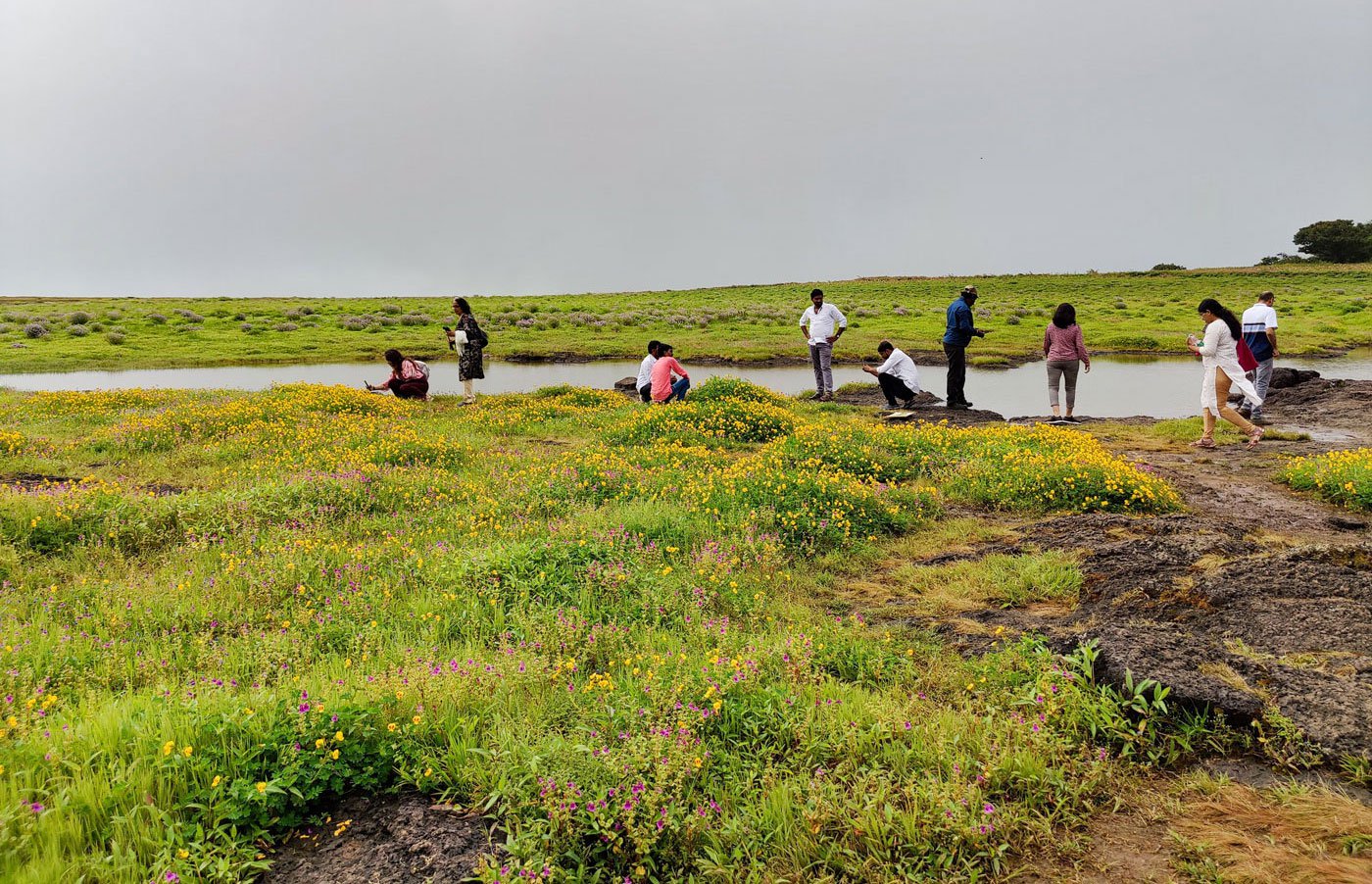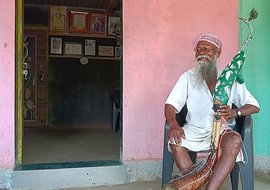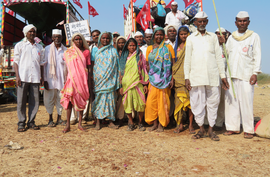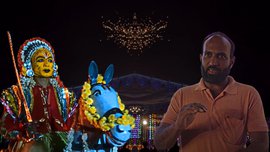It is September 2023, and we are in the middle of the flowering season in the ‘valley of flowers’ of the Western Ghats where hundreds of varieties of pink and purple flowers, many native to this biodiversity hotspot, bloom every year.
But over the years, instead of the vibrant blooms, only trampled blossoms lie around.
Located at an altitude of 1,200 metres, Kaas Plateau was awarded UNESCO's World Heritage Site in 2012. Since then, it has become a major tourist attraction in Maharashtra, especially from August to October – the flowering season. And therein lies the problem.
“Nobody used to come here. Kaas was just a hill for us. We used to graze cattle and goats,” says Sulabai Badapuri. “Now people walk on the flowers, click photos, pull them from the roots!” Frustrated with their indifference, the 57-year-old adds, “this is not a baag (garden); these flowers bloom on the rock.”
The plateau at Kaas is a
1,600-hectare bedrock in Satara
taluka
of Satara district and is also known as Kaas Pathar.


Sulabai Badapuri (left) is among the 30 people working on Kaas Plateau as guards, waste collectors, gatekeepers and guides with the Kaas forest management committee. The average footfall of tourists (right) crosses 2,000 every day during the flowering season


Kaas Plateau was awarded UNESCO's World Heritage Site in 2012. Since then, it has become a major tourist attraction in Maharashtra, especially from August to October
“The crowd becomes unmanageable,” says Sulabai who guards the plateau from 9 a.m. to 6 p.m. She is among the 30 people working on Kaas as guards, waste collectors, gatekeepers and guides with the Kaas forest management committee which was set up for conservation purposes.
The average footfall of tourists crosses 2,000 every day during the flowering season, as per the Joint Management Forest Committee of Satara. And rushing visitors pause briefly when Sulabai requests them, “ aho madam! Please don’t stamp on the flowers. They are delicate and will soon die in October,” only to continue with their photo sessions after a casual apology.
During the flowering season, this plateau is home to 850 plant species, of which 624 are listed in the Red Data Book – a document recording all endangered species – and 39 are endemic to the Kaas region. Over 400 medicinal plants grow here. “There were some elders who knew the medicinal plants and their use for knee ache, cold, fever. Not everyone knew about it,” says Laxman Shinde, a 62-year-old farmer from nearby Vanjolwadi village.
Apart from plant life, Kaas is also home to about 139 species of amphibians, including a variety of frogs, says this report . Mammals, reptiles and insects that live here aid the ecosystem’s functioning.
Prerna Agarwal, an independent researcher based in Pune, has studied the
ecological impact of mass tourism on Kaas for over five years. “These endemic
species are sensitive to external threats like crowd and trampling. Flowers
like purple bladderwort [
Utricularia
purpurascens
] get damaged. There has also been depletion of the malabar
hill borage [
Adelocaryum malabaricum]
species,”
she says.


Purple bladderwort (left) and o pposite-leaved balsam (right) are endemic flora of this valley which are sensitive to external threats like crowd and trampling
![The local jangli halad [Hitchenia caulina] found on the plateau is effective for knee and joint aches.](/media/images/05a-IMG_20230928_091734-JS-It_is_not_a_Kaa.max-1400x1120.jpg)

The local
jangli halad [Hitchenia caulina]
found on the plateau is effective for knee and joint aches.
The Malabar crested lark (right) is among the many birds and m
ammals
that aid the ecosystem’s functioning here
Ironically, it is this tourism that has opened seasonal employment opportunities for people from the surrounding villages between August and October. “I get 300 rupees for a day. [It is] better than farm labour,” says Sulabai, comparing it with the Rs. 150 she earns as daily wages in the fields of Kasani, Ekiv and Atali villages.
For the rest of the year, she cultivates paddy in her family's one acre rainfed land. “There is not enough work apart from farming. These three months provide some good income,” says Sulabai who lives four kilometres from Kaas in Kasani village, and walks to and fro from her home which “takes me one hour.”
Every year the plateau receives very high rainfall, between 2,000-2,500 mm. During monsoon the scarce soil on these rocks supports unique vegetation and native species of plant life. “The laterite rock on Kaas acts like a sponge by retaining water in its porous structure, and slowly distributing it to the streams nearby,” explains Dr. Aparna Watve. A Pune-based conservationist and botanist, she warns, “any damage to these plateaus will disturb the water table in the region.”
Dr. Watve has conducted field
studies in 67 plateaus of Maharashtra’s northern Western Ghats and Konkan.
“This [Kaas] is a delicate location. Extreme infrastructure activities disturb the working of ecology,” she says, referring to the growing
tourism and attendants, hotels and resorts which are booming within the 15 sq.
km range of the plateau.


This 1,600-hectare bedrock shelters 850 plant species . 'The laterite rock on Kaas acts like a sponge by retaining water in its porous structure, and slowly distributing it to the streams nearby,' explains Dr. Aparna Watve. Extreme infrastructure activities causing damage to these plateaus disturbs the water table in the region


Laxman Shinde (left) from Vanjolwadi collects plastic and non-disposable debris on Kaas during the flowering season. Ironically, it is the tourism that has opened seasonal employment opportunities between August and October for Laxman, Sulabai (right) and others from the surrounding villages
The many mammals, reptiles and insects that live here are in danger of losing their food as insects and flowers are disappearing due to anthropogenic causes. “Documentation [of the fauna] is needed because they have very little space to move, and can't survive anywhere else. If you pollute or degrade such habitats, they have nowhere else to go. They will go extinct,” says scientist Sameer Padhye. Disappearing insects and flowers, leading to a drastic drop in the blooming patterns, could disturb the entire ecosystem, he adds. Further, the harm to endemic species will impact pollination and water resources for the villages on the plateau’s fringe, notes Padhye.
Laxman shows us the jangli halad (Hitchenia caulina) plant, effective for knee and joint pains. Recalling a time four decades ago he says, “in those days flowers [on Kaas] would be very dense.” During flowering season, he collects plastic and non-disposable debris on Kaas, earning Rs. 300 a day, and the rest of the year he cultivates paddy on his two-acre land.
“We were born here. We know every corner,” says Saulabai. “Still, nobody considers us as we are not literate. But what are shikshit [educated] people doing to nature?”
Kaas looks different today. “It looks bekaar [spoiled]. It is not the Kaas of my childhood,” says Sulabai sadly.


